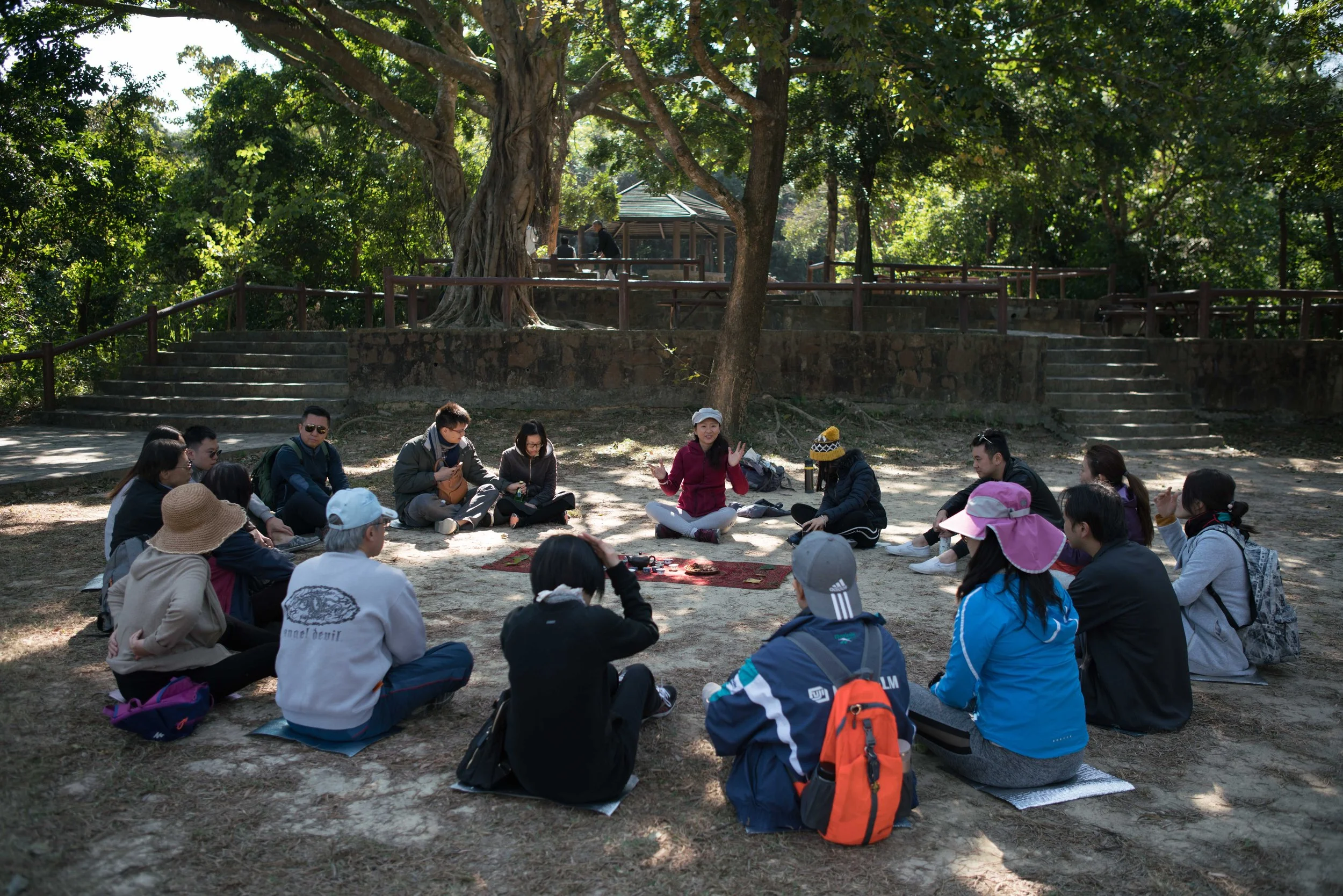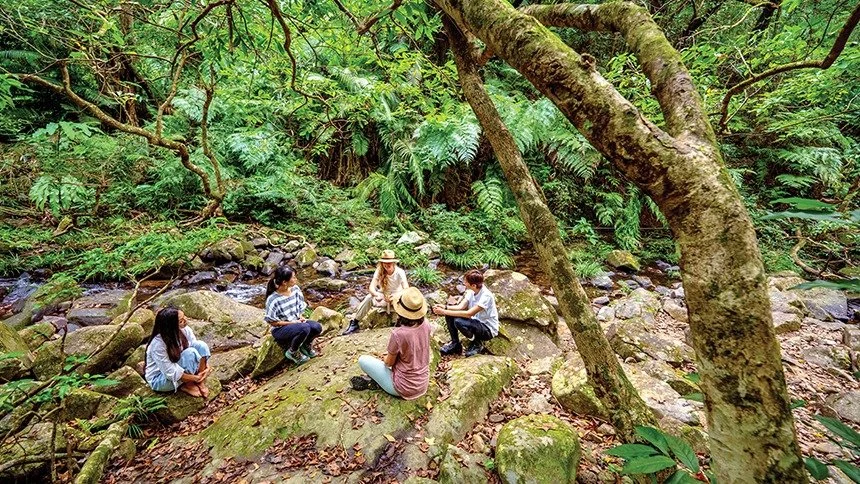What is Shinrin Yoku?
Shinrin-Yoku is the practice of immersing our senses in nature with the intention of enhancing well-being. It is a Japanese term that translates into “forest bathing” - taking in the forest atmosphere. Because of its holistic therapeutic effects on our mind, body and spirit, it is referred to in many parts of the world as Forest Therapy.
In a guided Forest Therapy experience, you will be led by an experienced guide through a series of connective invitations that slows you down, awakens your senses, opens your heart and supports you in building a deep, healing connection with nature.
Often times what happens during a Forest Therapy walk is improvised in the moment by the guide working in partnership with what nature offers, and adapted to meet the needs of the participants. While everyone’s experience is different, participants often shared that they experience a kind of communion with nature and other people in the group in a way that they have never experienced before.
In other words, Forest Therapy is not just a hike or a walk in the park. Each Forest Therapy Experience is thoughtfully designed by your guide following a standard sequence that has been adopted by hundreds of guides across the world, proven to support you to establish an embodied relationship with the present moment and the land.
The experience is gentle and accessible to almost anyone at any fitness level.
The Benefits of Forest Therapy
The benefits of immersing ourselves in nature is many-fold. Research conducted around the world has shown a range of physical benefits, including:
Reduced blood pressure
Reduced pulse rates
Reduced blood sugar
Reduced stress hormones levels
Increased white blood cells that fights off infections and cancer
Strengthened immune systems
Enhanced mood
And it goes beyond physical health
Being in nature in a healing way is congenial to opening up fresh insights and expanding our perspectives.
The opportunity for quiet reflection supports you in gaining a better understanding of yourself and your relationship with others.
Our guided sessions nurture and supports you in tapping into into a wider range of intuitive and rational abilities such as:
Authentic sharing and deep listening
Self-confidence and self-awareness
Creativity and enhanced problem-solving
Focused attention and detailed observation
Empathy and self-care
Developing supportive social connections
What Forest Therapy is not…
Forest Therapy is not a hike. While every walk is different, and some may involve walking a longer distance than others, the essence of Forest Therapy is about immersing ourselves in the more-than-human world in a healing way. It is not a physical challenge.
Forest Therapy is not a naturalist outing. Although we will see plenty of beautiful trees, flowers, plants and sometimes wild animals, the focus is not on understanding the names, characteristics or medicinal values of plants or trees, or wildlife spotting.
Forest Therapy is not a medical treatment, nor does it replace any kind of professional mental or physical healthcare support you are receiving. Spending time in nature in a healing way regularly enhances our wellbeing, but when it comes to treatment of any diagnosed conditions you must consult your physician.
How does it work?
Our most classic sessions typically lasts for around 2-3 hours and takes place either in beautiful forested country parks, or in urban green spaces. (Private, customised sessions for you, your loved ones, your team, your organisation or company can be shorter or longer and tailor-made to your needs. Connect with us to find out more.)
You will be guided through a series of connective sensory invitations that supports you to open up your pathways of connection with nature.
The distance we cover in each session differs, some can be as short as a few hundred meters, while some are longer (up to 5 km), but typically our sessions do not involve strenuous walking.
All you need to do is sign up, put on clothing and footwear that makes you comfortable outdoors, pack your bag with water and other necessities, and come with an open heart.
You can find out more by reading our FAQs below.
Why do I need a guide?
Indeed, not everyone needs a guide to help them slow down, return to the body, and connect with nature in a way that promotes a felt and embodied sense of connection.
In our fast-paced, digitalised world, many of us have shut down our senses and become disconnected with ourselves and nature. We have difficulty putting our phones down. We don't sleep enough. We find it awkward to be alone, be silent or do nothing. We think rest is being lazy and unproductive. We spend most of our time indoors in air-conditioned rooms in front of screens.
If this sounds familiar to you, you will benefit from having a guide in your forest bathing experience. The guide creates a space that gives you permission to forget about your to-do-list, what's coming next, or when you have to get going. The invitations given by your guide helps re-awaken your senses and allow you to explore nature in a wide range of ways you may never have thought of.
Essentially, the guide will help you remember how to open up your pathways of connection with nature by holding safe and sacred space. And of course, the guide will take care of logistics such as time-keeping, safety, route design and providing hospitality so you can be as carefree as you want and let the experience simply unfold for you.



